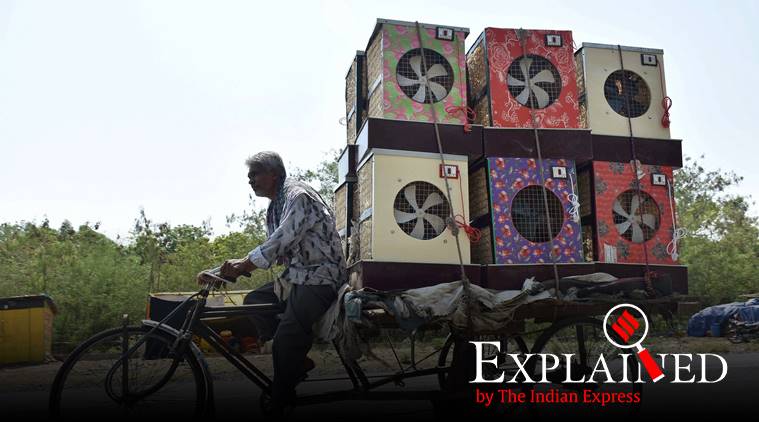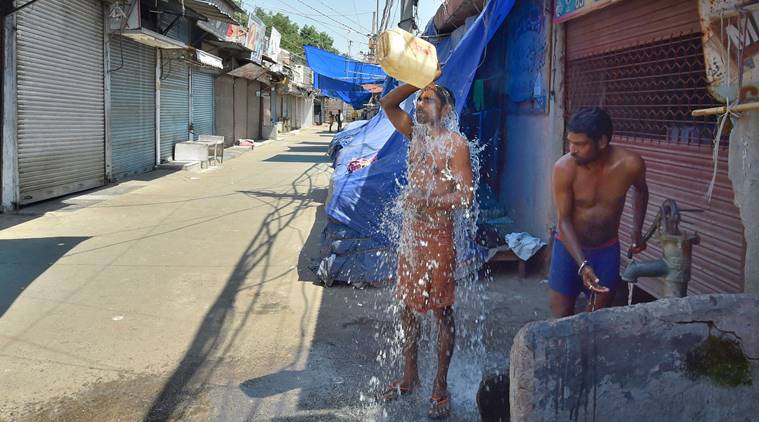The arrival of summer may have raised hopes that the novel coronavirus will not survive the temperature, but new studies have observed that there is still no statistically significant data to link epidemic growth with latitude and temperature. Even previous research that linked the spread with latitude, temperature and humidity, in fact, had noted that this correlation did not establish causation, and various other factors were not accounted for.

A recent study by Canadian researchers looked at a prospective cohort of 144 geopolitical areas worldwide (3,75,609 cases) with at least 10 Covid-19 cases, and local transmission by March 20. It concluded that epidemic growth was not associated with latitude and temperature, but may be associated “weakly” with relative or absolute humidity.
The study, published in the Canadian Medical Association Journal, excluded China, South Korea, Iran, and Italy. Most of the areas examined were in the northern hemisphere, near sea level, with temperate climates; the median temperature was 12.8°C and the median relative humidity was 69.0%.
The study projected that “seasonality” is likely to play “only a minor role”, and stressed that public health interventions — school closures, restricting mass gatherings, social distancing — “appear to have a major impact”.
Read | No proof on effect of summer on COVID-19 spread: Health Ministry
Associations not significant
This Canadian study is in concordance with three other studies from China. The most comprehensive of the three, published in the European Respiratory Journal, was conducted by the researchers of Fudan University. It examined data from 224 cities in China (including 17 in Hubei province).
It calculated the basic reproduction number (R0) for 62 cities with more than 50 cases, then used R0 to assess the association of temperature, relative humidity and ultraviolet radiation with the spreadability of Covid-19.
Story continues below this ad
After adjustment for relative humidity and UV, the study found temperature held no significant associations with cumulative incidence rate. Again, it found that spreadability did not change with increasing UV exposure. “This is quite similar with MERS epidemic in the Arabian Peninsula where MERS cases continue when temperatures are 45°C,” it said.
Read | Why it might be a good idea to keep AC temperature above 24 degrees this summer
 Men take a bath near a hand-pump in a deserted market, amid ongoing COVID-19 lockdown in old Delhi, Thursday, May 7, 2020. (PTI Photo: Manvender Vashist)
Men take a bath near a hand-pump in a deserted market, amid ongoing COVID-19 lockdown in old Delhi, Thursday, May 7, 2020. (PTI Photo: Manvender Vashist)
Ultraviolet exposure
In contrast to the Fuhan researchers’ findings, ecological modellers at the University of Connecticut have suggested that “ultraviolet light was most strongly associated with lower Covid-19 growth rates” . Their study is pending peer review.
Story continues below this ad
This study, too, said “uncertainty remains high” throughout the summers” in the absence of control, and that “aggressive policy interventions will likely be needed in spite of seasonal trend”. The study suggests that in the absence of intervention, the pandemic “will decrease temporarily during summer, rebound by autumn, and peak next winter.”
The researchers used data from 128 countries and 98 states or provinces, and examined the weekly rate of increase in the number of infections as a function of weather. The variables used: temperature 2m above land surface, relative humidity, absolute humidity, and incoming UV radiation at the land surface.
📣 Express Explained is now on Telegram. Click here to join our channel (@ieexplained) and stay updated with the latest
Seasonal variation
The Connecticut researchers’ study predicted Covid-19 will “oscillate between the northern and southern hemisphere” based largely on seasonal variation in UV radiation and temperature without continuing interventions. “Based mostly due to variation in UV and temperature, our model predicts that COVID-19 risk will decline across the northern hemisphere this summer, remain active in the tropics, and increase in the southern hemisphere as days shorten and UV declines.” Yet it added: “However, uncertainty remains high and the probability of a weekly doubling rate remained >20% throughout the summer in the absence of control. Consequently, aggressive policy interventions will likely be needed in spite of seasonal trends.”
Story continues below this ad
Also Read | How COVID-19 might complicate the conversation around climate change
Despite initial suggestions that seasonality would strongly control Covid-19, the researchers said weather only explains 17% of the variation in Covid-19 growth rates”. “Undescribed factors at the level of political units were just as important as weather (19% of variation), and much of the variation (64%) remains unexplained,” the study said, calling for further studies on the subject.

 A man carries air-coolers on a rickshaw trolley, which are in demand during summer season, amid ongoing COVID-19 lockdown in Jabalpur, Thursday, April 30, 2020. (PTI Photo)
A man carries air-coolers on a rickshaw trolley, which are in demand during summer season, amid ongoing COVID-19 lockdown in Jabalpur, Thursday, April 30, 2020. (PTI Photo)
 Men take a bath near a hand-pump in a deserted market, amid ongoing COVID-19 lockdown in old Delhi, Thursday, May 7, 2020. (PTI Photo: Manvender Vashist)
Men take a bath near a hand-pump in a deserted market, amid ongoing COVID-19 lockdown in old Delhi, Thursday, May 7, 2020. (PTI Photo: Manvender Vashist) 




































